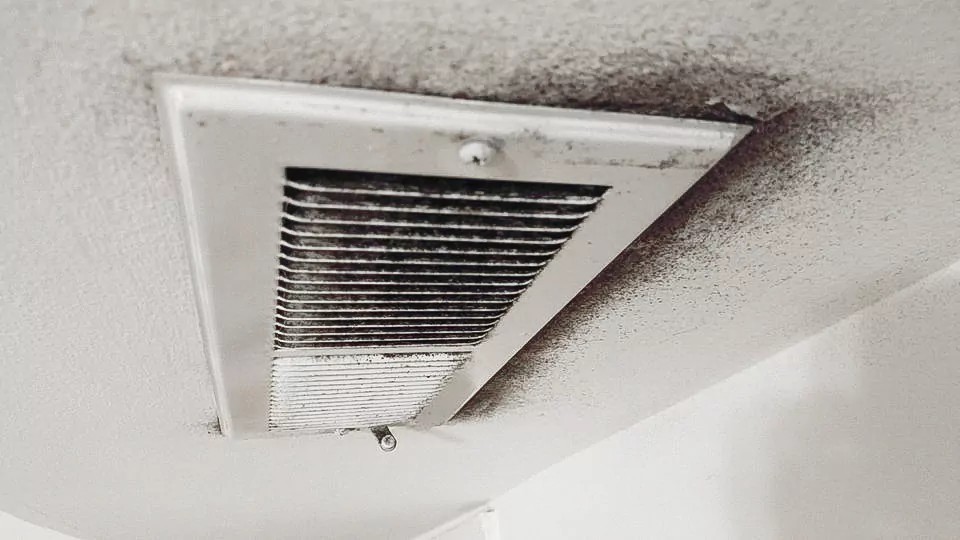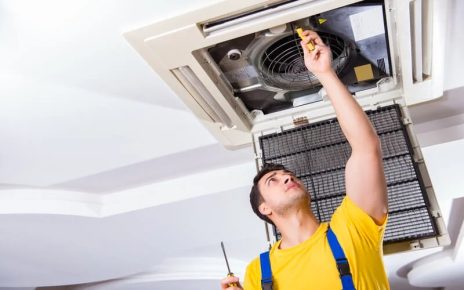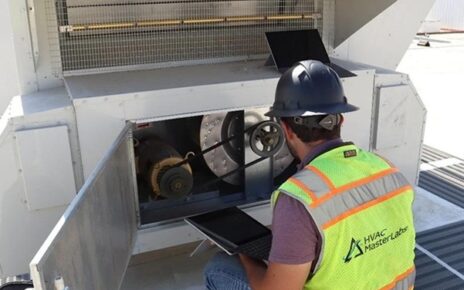Mold growth is a pervasive issue in many homes, silently infiltrating the hidden spaces of air ducts. These microscopic invaders thrive in the dark, damp environments provided by ductwork. Identifying mold in your ducts can be challenging, often requiring professional inspection. Beyond the unsightly appearance, airborne mold poses significant health risks to occupants. It can trigger allergies, asthma, and respiratory problems, making it essential to address them promptly. Moreover, mold contamination can severely impact indoor air quality, compromising the well-being of your family. This article will delve into the basics of mold growth, how to spot its presence, the health hazards it poses, and its detrimental effects on indoor air quality.
Causes of Mold in Air Ducts
Humidity and Condensation Issues
Excess humidity within your home can lead to condensation in the air ducts, creating a breeding ground for mold. To combat this, maintaining optimal indoor humidity levels is essential. Dehumidifiers or fixing water leaks can help prevent mold growth in your air ducts. You can also ensure that your ducts are well-insulated to avoid condensation from forming on their surfaces.
Poor Ventilation and Air Circulation
Insufficient airflow and ventilation within your HVAC system can contribute to mold growth. Regularly changing air filters and ensuring that your ducts are clean and unobstructed can improve air circulation, reducing the risk of mold formation. Additionally, consider the strategic placement of fans or air vents to enhance airflow throughout your home.
Leaks and Water Damage
Water leaks or damage near your air ducts can introduce moisture, providing an ideal environment for mold. Regularly inspect your home for leaks and address them promptly to prevent mold from taking hold in your ductwork. Moreover, consider installing leak detectors and alarms to provide early warnings in case of water-related issues.
Organic Material Build-Up in Ducts
Dust, debris, and organic materials can accumulate in your air ducts over time. When combined with moisture, these materials create a perfect mold habitat. Routine duct cleaning Dallas TX can remove these elements and reduce the risk of mold growth. Consider scheduling professional duct cleaning every few years, especially if you notice an increase in allergens or musty odors in your home.
Preventative Measures for Mold Control
Regular Maintenance of HVAC Systems
Scheduled HVAC system maintenance ensures that your system remains clean and well-functioning. During routine servicing, professionals can identify and address issues that could lead to mold growth, such as leaks or blockages. Invest in high-quality air filters and change them regularly to trap airborne particles and prevent them from settling in your ducts.
Improving Home Ventilation
Enhancing the ventilation in your home helps reduce humidity levels and promotes better airflow. Consider using exhaust fans in bathrooms and kitchens and opening windows when weather permits to improve air circulation. Installing a heat recovery ventilator (HRV) or an energy recovery ventilator (ERV) can also bring in fresh outdoor air while retaining indoor comfort.
Humidity and Moisture Management
Monitoring and controlling indoor humidity levels is key to mold prevention. Utilize dehumidifiers in areas prone to high humidity and fix any plumbing or structural issues that may contribute to moisture buildup. Regularly check and clean your HVAC system’s drip pan to prevent water accumulation that can lead to mold growth.
Use of Mold Inhibitors and Sealants
Applying mold inhibitors and sealants to your air ducts can add a layer of protection against mold growth. Consult a professional to determine the most suitable products for your specific ductwork. These products can create a barrier that inhibits mold spore attachment and growth on duct surfaces, providing long-term protection.
Inspection and Detection Techniques
Professional Mold Testing
When in doubt, it’s best to rely on the expertise of professionals who can conduct mold testing in your air ducts. They will identify the presence of mold and its type and recommend appropriate remediation steps. To ensure accurate results, professional testing may involve air sampling, surface sampling, and analysis by accredited laboratories.
DIY Mold Inspection Tips
Regularly inspect your air ducts for visible signs of mold, such as discoloration or musty odors. If you notice any issues, address them promptly to prevent mold development. Use a flashlight to examine ducts thoroughly, paying close attention to corners, joints, and areas near vents. Wearing protective gear like gloves and a mask is advisable when conducting DIY inspections to minimize exposure to mold spores.
Understanding Mold Sampling Results
If you decide to conduct mold sampling, ensure you understand the results. Consult with experts or reference reliable resources to interpret the findings accurately. Remember that mold spore levels can fluctuate, so multiple tests over time may provide a more comprehensive picture.
When to Call a Professional
If you suspect mold in your air ducts or face a severe infestation, don’t hesitate to call a professional mold remediation service. They have the necessary knowledge and tools to eradicate mold and restore indoor air quality safely. Professional remediation may include thorough cleaning, HEPA filtration, and specialized techniques to ensure complete mold removal without cross-contamination.
Mold Remediation Strategies
Cleaning vs. Replacement of Ductwork
When faced with mold in your air ducts, the first decision is whether to clean or replace the ductwork. Air duct cleaning services Frisco is often the preferred choice, as it is cost-effective and less disruptive. However, replacement may be necessary if the contamination is severe or the ducts are old and deteriorating. A professional assessment will help determine the best course of action.
Step-by-Step Mold Removal Process
The mold removal process involves several crucial steps. Initially, the affected areas are isolated to prevent further contamination. Then, specialized equipment and cleaning agents are used to eradicate the mold. After duct cleaning Mckinney, thorough drying is essential to prevent future growth. Professional technicians follow a meticulous protocol to ensure complete mold removal, safeguarding indoor air quality.
Safe Cleaning Agents and Tools
Utilizing suitable cleaning agents and tools is imperative for effective mold remediation. Eco-friendly, non-toxic cleaning agents are favored, ensuring safety for occupants. High-powered vacuums and HEPA filters capture mold particles and prevent their dispersal. The selection of these tools and agents is pivotal in achieving successful mold removal without harming your health or the environment.
Post-Remediation Verification
After mold removal, verifying the problem is fully resolved is crucial. This involves a post-remediation inspection, where professionals assess the ducts for any remaining mold or moisture issues. Only when these tests confirm a clean and dry environment can you be confident in your air ducts’ safety. Regular inspections help maintain healthy indoor air quality.
Long-Term Mold Management
Scheduled Professional Air Duct Cleaning
To prevent mold recurrence, scheduling regular professional air duct cleaning Southlake TX is essential. Routine cleaning removes dust, debris, and potential mold spores, reducing the risk of future contamination. A clean air duct system promotes healthier indoor air and extends the lifespan of your HVAC equipment.
Monitoring Humidity Levels
Maintaining optimal humidity levels in your home is vital for mold prevention. High humidity can create a conducive environment for mold growth. Regularly monitor and control indoor humidity to keep it within the recommended range, typically between 30{90300ced543113bb59457fff20168dd9b5b860e93baed59a792eab098942378c} and 50{90300ced543113bb59457fff20168dd9b5b860e93baed59a792eab098942378c}. Dehumidifiers can be a valuable tool in achieving this goal.
Educating About Mold Prevention
Education is vital in mold prevention. Make sure you and your family know the factors contributing to mold growth and how to prevent it. Simple practices like proper ventilation, avoiding water leaks, and promptly addressing any moisture issues can go a long way in safeguarding your air ducts from mold.
Investment in Air Purification Systems
Consider investing in air purification systems to enhance indoor air quality further. HEPA filters and UV-C germicidal lamps can help trap and eliminate mold spores and other allergens from the air. These systems provide an added layer of protection for your home, especially if you live in a humid climate or have a history of mold problems.
In the quest to eliminate mold from your air ducts, knowledge is your best weapon. Adopting preventive measures, maintaining optimal conditions, and seeking professional help when necessary can ensure clean, healthy indoor air for your family. Mold may be a silent invader, but with the right strategies, you can keep it at bay and enjoy a safe and comfortable living environment.




